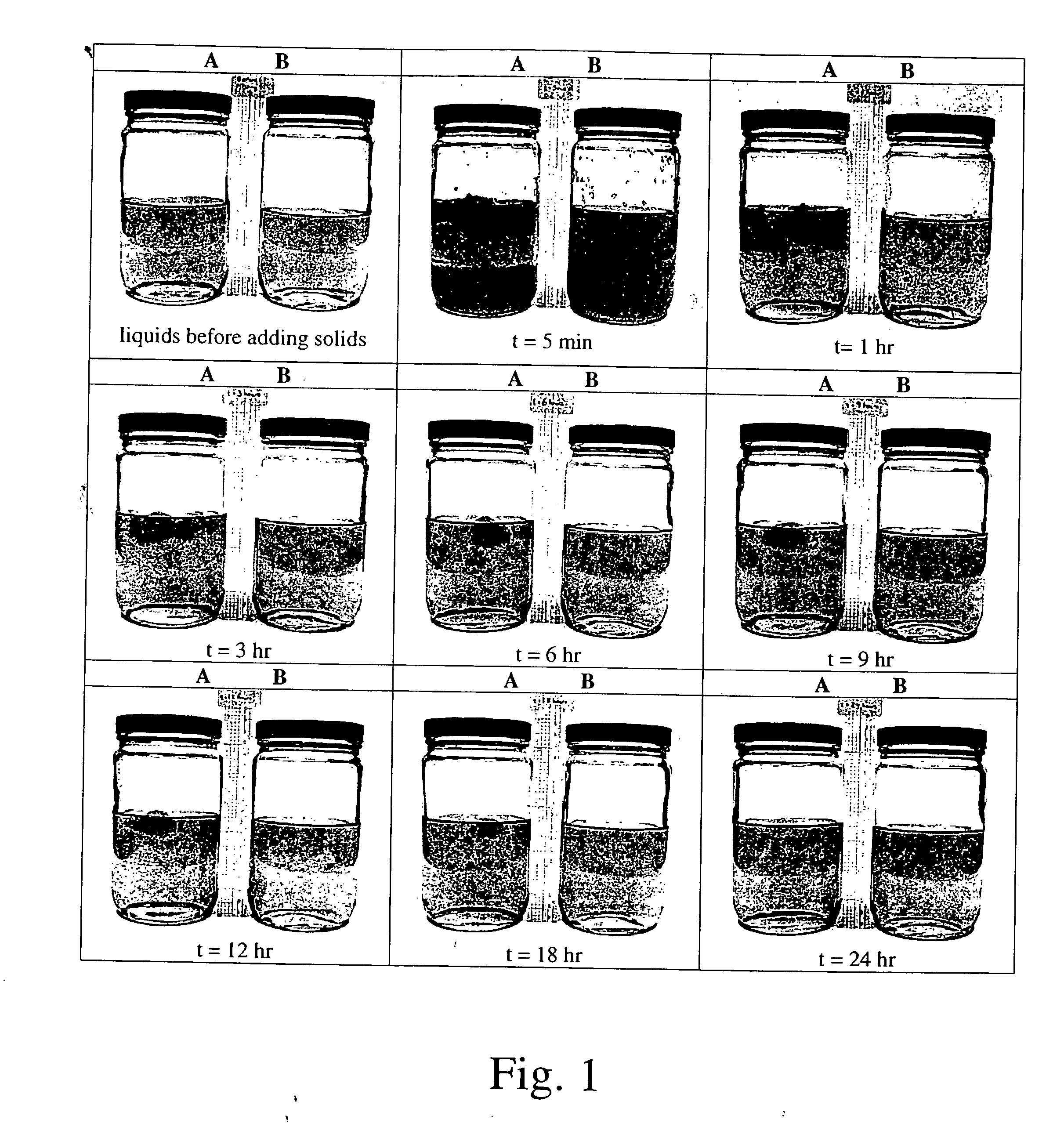Method for compounding polymer pellets with functional additives
a polymer pellet and functional additive technology, applied in the field of cellulose and functional additive admixtures, can solve the problems of cellulose esters degrading, reducing the usefulness of certain applications, and dioctyl adipate generally showing poor compatibility with cellulose aceta
- Summary
- Abstract
- Description
- Claims
- Application Information
AI Technical Summary
Benefits of technology
Problems solved by technology
Method used
Image
Examples
example 1
Infusion of Plasticizer and Stabilizer into Pellet
[0072] Cellulose triacetate (“CTA,” CA-436-80 from Eastman Chemical Company) (300 g) was combined with acetone (300 g) and diethyl phthalate (DEP) containing 1% tert-butyl phenol (150 g) in a 32-ounce glass jar. The jar was rolled for 16 hours, at which time all of the liquids had absorbed into the cellulose triacetate pellets, and the pellets had swelled to fill the jar. The pellets were poured into a shallow pan and allowed to air dry at room temperature for 78 hours. The dry pellets weighed 446 g. This resulted in pellets with a theoretical plasticizer content of 32.8% plasticizer. The dry pellets were free-flowing and similar in shape to the original pellets, although slightly larger in size and slightly more irregular in shape. The pellets were submitted for plasticizer analysis, which gave 32.36% DEP and 0.17% tert-butyl phenol. This demonstrates that the plasticizer and stabilizer were both infused into the pellet.
example 2
Infusion of Plasticizer into Pellet
[0073] Cellulose triacetate (CA-436-80 from Eastman Chemical Company) (440 g) was combined with acetone (450 g) and triphenylphosphate (60 g) in a 32-ounce glass jar. The jar was rolled for 24 hours, at which time all of the liquids had absorbed into the cellulose triacetate pellets, and the pellets had swelled to fill the jar. The pellets were then poured into a shallow pan and allowed to air dry at room temperature followed by drying in a forced air oven at 60° C. for 6 hours. The dry pellets weighed 506 g, which agrees with the target 12% plasticizer level. The dry pellets were free-flowing and similar in shape to the original pellets, although slightly larger in size and slightly more irregular in shape.
example 3
Infusion of UV Stabilizer into Pellet
[0074] Cellulose triacetate (CA-436-80 from Eastman Chemical Company) (200 g) was combined with 200 g acetone and 1.0 g Tinuvin7 292 (UV stabilizer available from Ciba) and 1.0 g Tinuvin7 1130 (UV Absorber available from Ciba) in a 32-ounce glass jar. The jar was rolled for 15 hours, at which time all of the liquids had absorbed into the cellulose triacetate pellets, and the pellets had noticeably increased in size. The free-flowing pellets were poured into a shallow dish and allowed to air dry at room temperature for 78 hours.
PUM
| Property | Measurement | Unit |
|---|---|---|
| thickness | aaaaa | aaaaa |
| transmittance | aaaaa | aaaaa |
| thickness | aaaaa | aaaaa |
Abstract
Description
Claims
Application Information
 Login to View More
Login to View More - R&D
- Intellectual Property
- Life Sciences
- Materials
- Tech Scout
- Unparalleled Data Quality
- Higher Quality Content
- 60% Fewer Hallucinations
Browse by: Latest US Patents, China's latest patents, Technical Efficacy Thesaurus, Application Domain, Technology Topic, Popular Technical Reports.
© 2025 PatSnap. All rights reserved.Legal|Privacy policy|Modern Slavery Act Transparency Statement|Sitemap|About US| Contact US: help@patsnap.com

